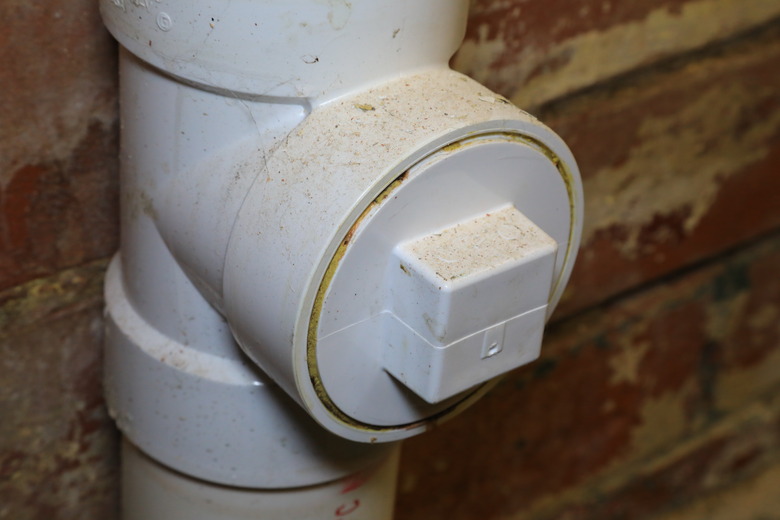What Is A Cleanout In Plumbing?
We may receive a commission on purchases made from links.
Unfortunately, clogs often happen at inconvenient and hard-to-reach places in your plumbing system. A cleanout is an easily accessible section of pipe with a removable cover that makes it easier for you or a plumber to access your pipes. This access lets you run an auger or snake into the pipes to clear clogs and provides easy access for a plumber with a camera to check your pipes for other issues. Your home may have several cleanouts or none depending on the age of the house.
Tip
A cleanout is a section of pipe with a removable cover for easy access. Usually located along the lateral sewer line as well as various interior drain pipes, cleanouts provide easy access for removing clogs in a drain pipe.
Finding Your Cleanouts
Finding Your Cleanouts
Cleanouts are located only on drain pipes, and they may be indoors or outdoors. If your house is old enough to have cast iron pipes, you may not have any cleanouts. In which case, if your home's main drain or sewer line needs to be cleaned, your plumber will access the line by removing a toilet and going through the toilet drain.
Newer homes almost always have at least one cleanout and often have more. Look for a short stub or branch of drain pipe with a flat cap that has a square nut at its center, and you've found a cleanout. Outdoors, cleanouts often stick out of the ground, but they can also be buried a foot or so underground. Indoors, any drain pipe can have a cleanout. There are also special P-traps — the curved section of pipe under a sink — that include a small cleanout at the lowest point of the trap.
How to Open a Cleanout
How to Open a Cleanout
The square nut in the middle of the cleanout cap works just like any other nut. You grip it with an adjustable wrench, pipe wrench, or tongue-and-groove pliers and turn the cap counterclockwise to remove it; it unthreads just like a screw. If the cap is tough to open, you may want to purchase a special cleanout plug wrench. This inexpensive tool makes it easier to get a good grip on the plug and open it if it's being stubborn.
Many cleanout plugs are made of PVC or other modern piping materials, but the cleanouts in older homes may be made of brass or cast iron or other metals that have corroded over time. These can prove very difficult to open. One common trick is to use a propane torch to carefully heat the edge of the cleanout plug to soften any old pipe dope. You can also try applying some penetrating oil, like Liquid Wrench. Try lubricating the plug only after you try the torch; some penetrating oils are flammable.
If neither of these tips does the trick, your next course of action is to cut the pipe below the cleanout cap. When you're finished working, you can add a new section of pipe and cap to the cleanout. If you don't feel comfortable doing so, call a plumber, who will be happy to do the job for you and may even be able to get off your stubborn cleanout cap without cutting the pipe.
A Word of Warning
A Word of Warning
As a general rule, the things that come out of your sewer or drain line are pretty gross. Depending on where your clog is located, however, coming out of your drain is exactly what your wastewater will do when you remove the cleanout cap, and it may do so with a bit of force. To avoid contaminating yourself, step away from the cleanout as quickly as you can when removing the cover. It's also a good idea to have a bucket at the ready and to wear vinyl gloves and eye protection when working with drain lines.
If your cleanout is on the side of your pipe rather than the top, place a bucket or bin beneath the cleanout to catch any overflow. If possible, do this even when you're working with an outdoor cleanout. You certainly don't want sewer water in your basement, but you should make every effort to avoid contaminating the ground outdoors as well when possible.
If your cleanout is indoors and you need to clean the surrounding area after fixing your clog, clean the area with warm water and a low-suds detergent. To disinfect the area, add 8 tablespoons of bleach to a gallon of water and wipe down the area. Allow the area to air-dry.
